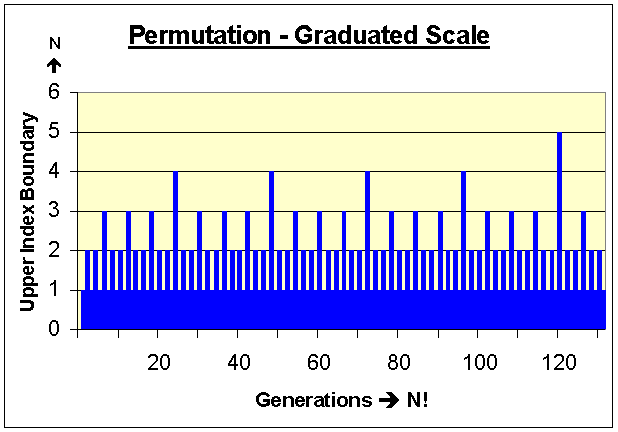|
Fundamental Analysis of QuickPerm Above
| Number of Objects to Permute (N) |
a[N] Display of Initial Sequence |
a[N] Display of Final Sequence |
Total Number of Unique Combinations Produced (N!) |
| 3 | 1 2 3 | 3 2 1 | 2 * 3 = 6 |
| 4 | 1 2 3 4 | 2 3 4 1 | 6 * 4 = 24 |
| 5 | 1 2 3 4 5 | 5 2 3 4 1 | 24 * 5 = 120 |
| 6 | 1 2 3 4 5 6 | 4 5 2 3 6 1 | 120 * 6 = 720 |
| 7 | 1 2 3 4 5 6 7 | 7 2 3 4 5 6 1 | 720 * 7 = 5040 |
| 8 | 1 2 3 4 5 6 7 8 | 6 7 2 3 4 5 8 1 | 5040 * 8 = 40320 |
| 9 | 1 2 3 4 5 6 7 8 9 | 9 2 3 4 5 6 7 8 1 | 40320 * 9 = 362880 |
| if N is even | 1 2 3 . . . (N - 1) N | (N - 2) (N - 1) 2 3 4 . . . N 1 | (N - 1)! * N = N! |
| if N is odd | 1 2 3 . . . (N - 1) N | N 2 3 . . . (N - 1) 1 | (N - 1)! * N = N! |
A Permutation Ruler:

Next is tail combinations represented in EXAMPLE 02.